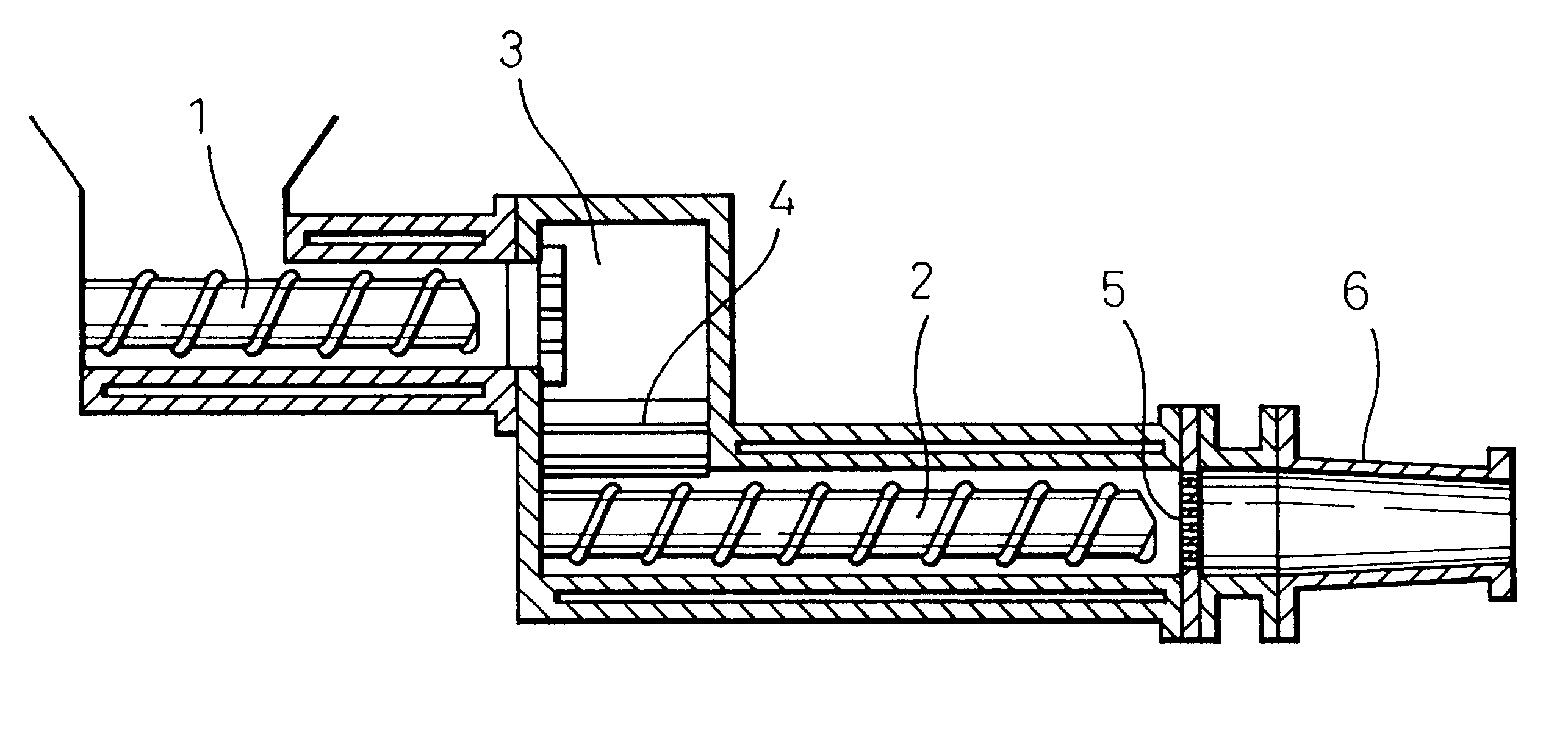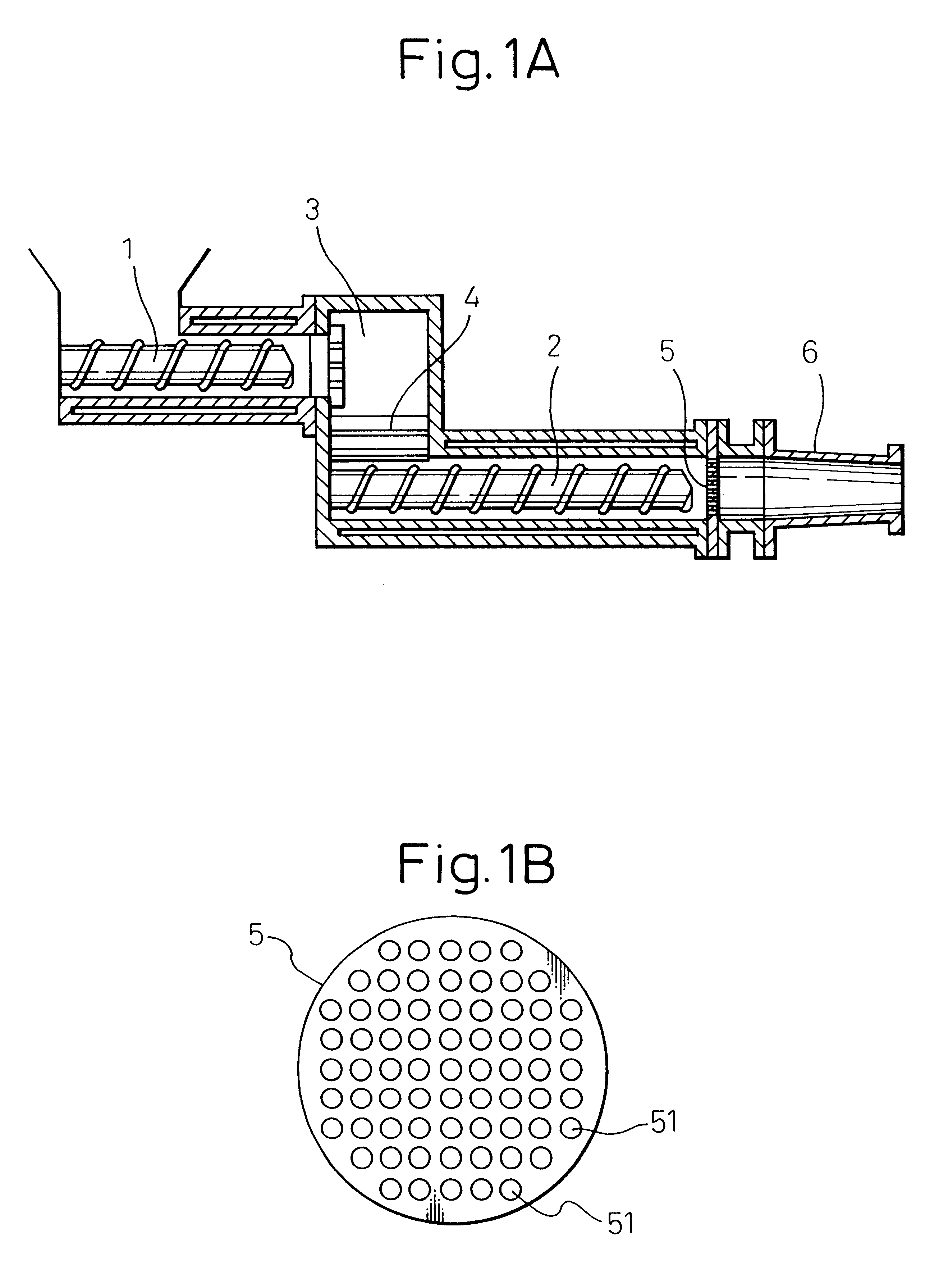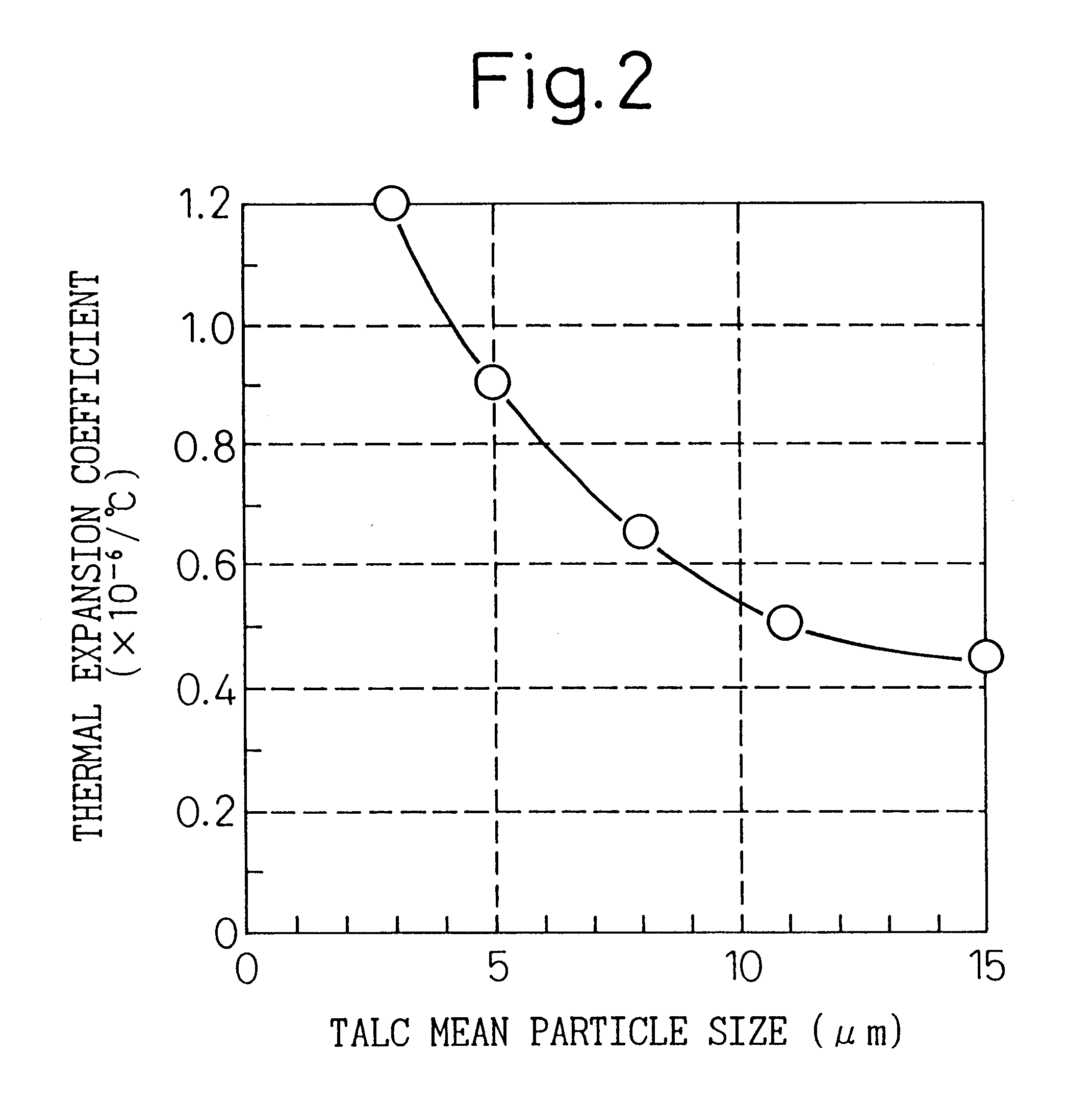Process for producing cordierite honeycomb structural body and honeycomb structural body molding aid
a technology of cordierite and honeycomb, which is applied in the direction of manufacturing tools, physical/chemical process catalysts, ceramicware, etc., can solve the problems of weak catalyst carrier properties, cell walls breaking, and inhibiting the provision of starting mixtures
- Summary
- Abstract
- Description
- Claims
- Application Information
AI Technical Summary
Problems solved by technology
Method used
Image
Examples
examples 4 to 6
, Comparative Examples 4 to 8.
An experiment was conducted to determine the effect of using mixtures of water-soluble polyhydric alcohol derivatives and polyhydric alcohols as molding aids with cordierite starting materials. The cordierite starting materials used were talc, kaolin, alumina and aluminum hydroxide with the same mean particle sizes, maximum particle sizes and weight ratios as in Example 1 (see Table 1), and then 2.8 wt % of a lubricant / humectant, 5.5 wt % of methyl cellulose as a binder and a suitable amount of water were added to 100 wt % of the cordierite starting material, and kneaded to prepare a round bar-shaped starting mixture. The lubricant / humectant used was a water-soluble polyhydric alcohol derivative and polyhydric alcohol, or either alone, with the different mixing ratios listed in Table 3. A 5% aqueous solution of polyalkylene glycol was used as the water-soluble polyhydric alcohol derivative, and glycerin or diethylene glycol was used as the polyhydric al...
PUM
| Property | Measurement | Unit |
|---|---|---|
| Fraction | aaaaa | aaaaa |
| Fraction | aaaaa | aaaaa |
| Particle size | aaaaa | aaaaa |
Abstract
Description
Claims
Application Information
 Login to View More
Login to View More - R&D
- Intellectual Property
- Life Sciences
- Materials
- Tech Scout
- Unparalleled Data Quality
- Higher Quality Content
- 60% Fewer Hallucinations
Browse by: Latest US Patents, China's latest patents, Technical Efficacy Thesaurus, Application Domain, Technology Topic, Popular Technical Reports.
© 2025 PatSnap. All rights reserved.Legal|Privacy policy|Modern Slavery Act Transparency Statement|Sitemap|About US| Contact US: help@patsnap.com



